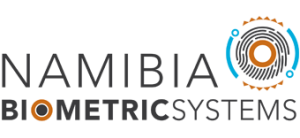How Automated Border Control (ABC) Works
As outlined in the previous article, Automated Border Control (ABC) is defined as the use of automated or semi-automated systems which can verify the identity of travellers at border crossing points (BCPs), without the need for human intervention. Automated border process is conducted as follows:
- The traveller inserts the biographical data page of the passport into the passport reader.
- The passport reader checks security features, extracts information in the Machine Readable Zone (MRZ) and communicates with the chip in the e-Passport to verify the genuineness of the document. The aim of this process is to check that the traveller is carrying a genuine and valid travel document. This is referred to as the Document authentication process.
- Capture a live biometric image of the traveller, extract relevant features and then compare with the biometric data stored in the chip. This process is similar as in the manual border control where an officer compares the traveller’s face to the picture in the old picture in the passport. The aim of this process is to verify by using biometrics that the travel document belongs to the traveller. This process is referred to identity verification process.
- The system checks if the traveller is indeed entitled/authorized to cross the border. The biographic data may be checked against available watch list databases. If there is a potential match then the traveller should be directed to an officer. The exact process will depend on the procedures in place within each border management authority.
- If the verification is successful the E-Gate allows the traveller to cross the border. Otherwise, the traveller is referred to manual control. Therefore, the process must be supervised by qualified border guards. The decision to allow/deny access is based on pre-defined logic, sometimes requiring the intervention of the border guard operating the system. Some ABC systems may allow the recording of traveller’s Entry/Exit data.
In general, an ABC system consists of the following equipments:
- One or two physical barriers (e-Gates).
- E-Passport readers: optical recognition of the biographic data page, the MRZ and a radio frequency (RF) reader for communication with the chip.
- A monitor for displaying instructions in a language understood by travellers.
- Biometric capture device. This depends on the type of biometric been used.
- System management hardware and software. Maintenance of both hardware and software are critical for operation of the system.
More information on this article or any of the previous articles can be requested from info@namibiabiometricsystems.com.
